Topics
Mobile data capture also works with Android – this is the experience of companies that have modernized their scanner solutions. In most cases, modernizing an MDE solution is a major project. The following article uses SAP logistics as an example to show how the switch to modern handhelds and logistics apps can be achieved smoothly.
Why are companies currently planning to switch?
MDE solutions have been a standard tool in intralogistics in the SAP environment for at least two decades. It is obvious that some solutions are outdated and have not kept pace with the continuous development of internal processes and workflows.
In addition, there are external factors that make it sensible to modernize scanner solutions. A key impetus to actually start planning often comes from the hardware used:
- No MDE devices available
- Limited operational reliability
- Performance
Device availability
Windows CE devices are failing and often cannot be replaced. Devices that were originally purchased when the MDE solution was introduced are reaching the end of their service life and need to be replaced. Sometimes you can still find remaining stock at selected retailers, but increasingly there are no longer any replacements for old models on the market.
Operational reliability
Discontinued support for mobile Windows operating systems leads to security gaps that can no longer be closed. MDE solutions introduced in the late 2010s are usually based on MDE devices with a Windows operating system, e.g., Windows Mobile or Windows CE. Support for these operating systems has been gradually phased out since 2013.
In practice, the discontinuation of support has consequences, primarily from a security perspective: Operating devices with Windows operating systems involves risks because security-related vulnerabilities can no longer be closed with updates. The security concerns arising from the discontinuation of Windows support are a reason for IT managers to push ahead with the modernization of scanner solutions.
Performance

Outdated MDE technologies cause acceptance problems among employees. This is because employees also have expectations: those who are used to modern smartphones in their private lives will eventually wonder why their employer does not provide up-to-date tools. Small screens, old-fashioned user guidance, and mediocre application performance cause discontent and impair productivity.
MDE modernization planned, what now?
Ultimately, it doesn't matter which of the above motives is the driving force. The goal is clear – and now it's time to look ahead. All too often, the status quo is perpetuated in a slightly more contemporary guise. This may be appropriate in individual cases, but it may also mean that potential is being wasted.
Key aspects that should be considered here are:
- Question the status quo: Do the existing MDE processes still meet today's intralogistics requirements?
- Identify potential: Can new technologies and processes improve logistics processes?
- Find the right software: Should the focus be more on transaction logic or on the physical logistics processes and the usability of the MDE solution?
- Putting together a team: Which departments in my company should be involved in MDE modernization?
- Researching partners: Which service provider for the logistics app and which supplier for mobile hardware meets our requirements?
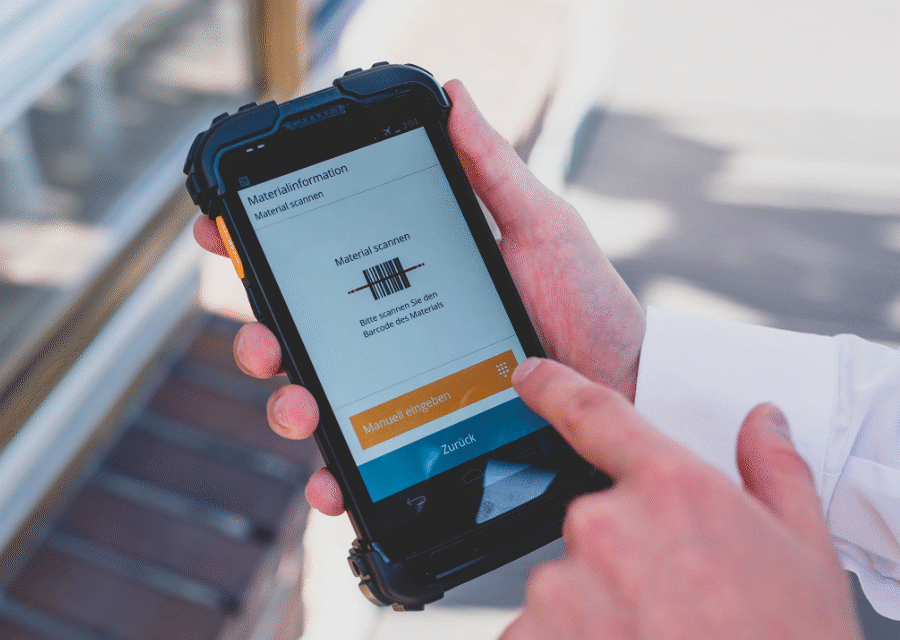
Learn everything about modern mobile SAP apps in warehouse and production.
Are the MDE processes still up to date?
Mobile data capture has been one of the established technologies in the SAP environment for over 20 years, enabling paperless processes in warehousing, production, shipping, and other areas. In our experience, inventory solutions are first designed from the ground up, then implemented, put into operation, and selectively adapted or further developed. The modernization—or porting—of an MDE solution from the Windows Mobile environment to the Android world offers the perfect opportunity to put mobile processes to the test.
Here are a few selected questions that can help you identify potential for optimization in the early stages of a porting project:
- 1. Is paper still used in the warehouse or on the shop floor, and why?
- 2. Are there any activities in which employees lose unnecessary time due to travel or waiting times—and if so, which ones?
- 3. Is a desktop workstation also used for SAP postings as part of warehouse processes, and can these postings also be processed on mobile devices?
- 4. Which functions of the existing MDE solution should be improved?
- 5. Can a warehouse control station or monitoring component supplement selected mobile processes?
There are many other questions that warehouse managers can ask about logistics practices and the work of employees.
Our tip: Have the specialist department, e.g., logistics or production, formulate requirements and goals, even if these are not available in the current MDE solution. These are always useful aids for coordination with the partner of the future scanner app in order to find suitable solutions for the actual – physical – logistics processes with SAP.
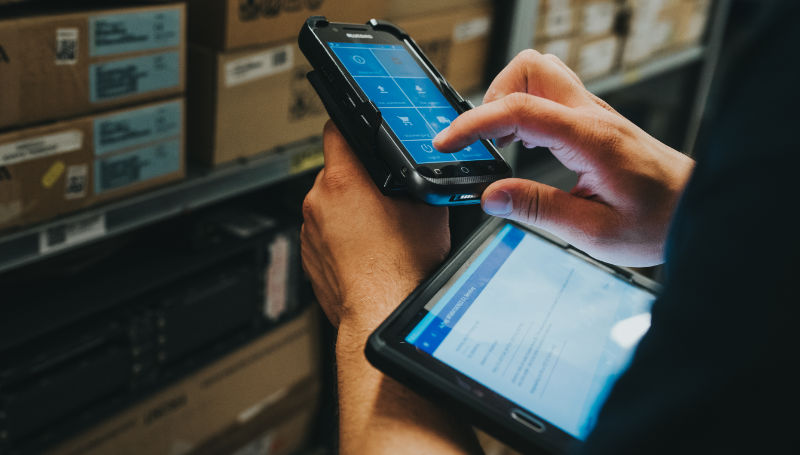
Optimization potential and easier work
In the run-up to MDE modernization projects, relevant topics that play a role in the SAP environment are regularly discussed:
Smooth operation without crashes. Specifically, this refers to disruptive interruptions in the application flow of existing solutions. The technology originally used, e.g., SAP Console, Telnet, or ITSmobile, is responsible for this. Abortions usually occur when the WLAN connection to the MDE device is lost. As a result, the data entered in a booking process is lost, and the application must be restarted and the booking restarted. It is obvious that such software behavior leads to frustration among warehouse employees.
Modern solutions store data temporarily and hold it until the data connection is reestablished in the background. The employee can then simply complete the posting that was started.
Use of OCR text recognition, RFID, or NFC. Current industrial handhelds support a wide range of technologies for mobile data capture, which, in combination with the appropriate software, enable flexible processes. For example, integrated cameras can be used to recognize and trigger text, thereby simplifying and automating data capture – for example, order numbers on delivery notes.
In production, NFC tags facilitate the tracking of devices, including enriched data. Using the scanner app, data from the SAP variant configurator can be linked to a device barcode and written to an NFC tag. Alternatively, special printers enable the printing of RFID labels, with the scanner app providing the necessary information, e.g., when confirming transport orders in production supply.
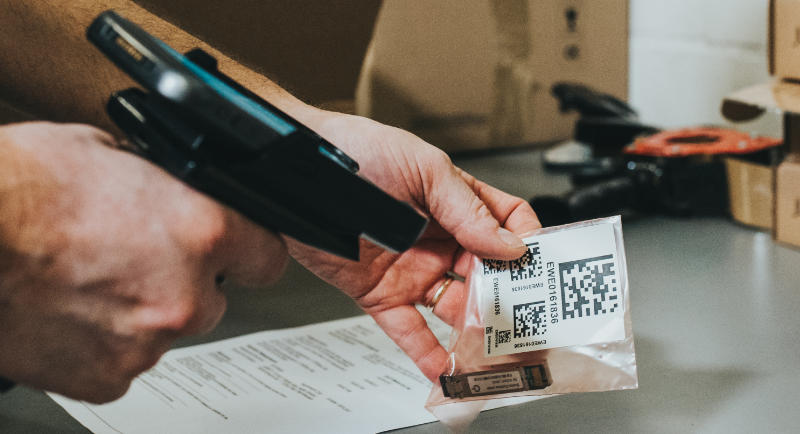
Our tip: Logistics managers should no longer be satisfied with the constraints of standard frameworks, but should tailor their mobile data capture to take advantage of potential for improvement and automation.
Finding the right MDE software
The selection and implementation of the scanner software and the appropriate service provider are crucial to the success of an MDE relaunch. It depends on the company's preference whether the SAP consultant, with his more generalist approach, makes the MDE solution Android-compatible or whether a specialized software provider with logistics expertise is commissioned – both with their own approaches:
- Transaction-oriented approach of SAP consultants: The booking logic of SAP transactions is the key guideline for mobile applications.
- Process-oriented approach of specialized logistics apps: The focus is on the physical processes in the warehouse or shop floor and ease of use.
Both approaches have their supporters, with IT specialists tending to favor the transaction approach and logistics specialists focusing on the real processes. In any case, it is important that the service provider involved in such a project has both SAP expertise and detailed knowledge of logistics processes.

Companies also have a choice when it comes to scanner software: from SAP's own Fiori approach to the continued use of the above-mentioned legacy technologies based on Android to special software for business apps in warehousing and production. In addition to IT strategy and corresponding specifications, the focus should first be on the technical requirements, followed by the selection of mobile software.
- SAP itself relies on Fiori technology for mobile applications. Many ready-made, mostly simple apps for standard functions and reports are based on Fiori. Warehouse processes are usually configured individually depending on customization. This requires in-house developments with Fiori, whereby the generalist approach reaches its limits, especially in more complex warehouse scenarios, for example, when supporting different scanner hardware or in terms of app performance.
- Specialized MDE software often relies on process templates. SAP processes are thus implemented in the form of warehouse apps. Specialized logistics apps sometimes also enable the connection of third-party systems in addition to the SAP backend, making individual, tailor-made scanner solutions possible.
Depending on the respective requirement profile, one or the other approach may be suitable.
Our tip: The clearer the target processes are known and described, e.g., in a specification sheet, the easier it will be to plan an MDE modernization and coordinate with a software service provider.
Plan the project team early on
The team factor is often underestimated. MDE modernization is an investment project that requires the support of various departments within the company. The key players are the managers of the requesting department, often logistics or production management, and the IT department, as well as specialists such as the heads of goods receipt and shipping or the SAP application administrator. In addition, the involvement of other colleagues from interface areas is often required—purchasing may be involved in a project, as may the legal department and the data protection officer.
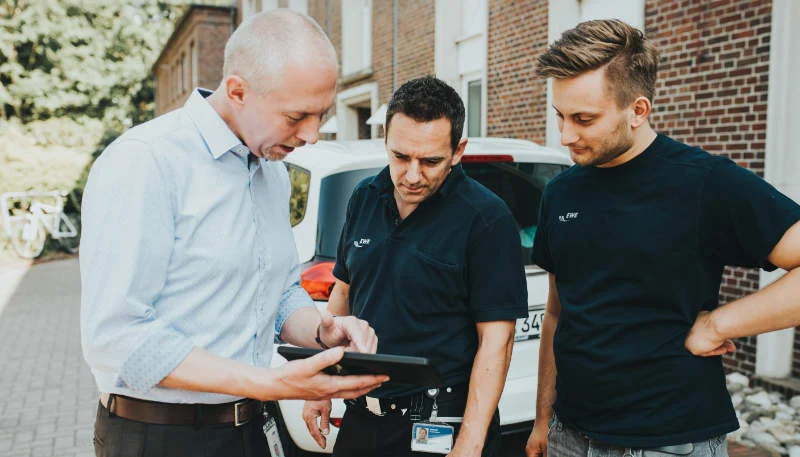
Our tip: Appoint the relevant employees for a project at an early stage and involve them in the planning. This ensures a rigorous decision-making process for the project partners for hardware and mobile software, as well as the subsequent implementation.
Which hardware is best suited?
As mentioned above, successful porting of an MDE solution is not possible without partners. If you are used to working with a mobile inventory solution, it makes sense to seek expert advice before switching to today's Android-based handheld world.
The range of available industrial devices is wide: it extends from simple, smartphone-like entry-level models with integrated imagers to ultra-rugged mobile computers with high-performance scanners. A hardware expert can also answer the question of whether special terminals are suitable for use on forklifts or whether rugged tablets are sufficient. When planning the new MDE solution, it may also be worth considering whether wearables such as ring or glove scanners can be used or whether selected processes can be supplemented by label printing.
Our tip: Since the topic of hardware is quite complex, it should be handled by a knowledgeable partner. Tools such as the Hardware Finder or Hardware Advisor can provide initial guidance during the planning phase.

Was gibt es sonst noch zu beachten?
Some key aspects for porting an MDE solution to Windows Mobile have been outlined so far. We would also like to briefly mention the following in this context:
- S/4HANA: In the context of S/4HANA conversions, no significant adjustments are to be expected with regard to warehouse apps – provided that the underlying processes in SAP remain unchanged during the conversion.
- Project planning: Depending on the number of mobile processes, between 3 and 6 months can be planned for the actual implementation or customization of a scanner app.
- Commercial approaches: Interested parties will find different pricing models on the market. On the one hand, there is the classic model, which includes the purchase of licenses for software and users and the implementation of an introduction project. In addition, there is also pricing per mobile process and usage-based billing models (subscription principle) with a low initial investment.
Conclusion
The widespread availability of Android-based MDE hardware and the associated possibilities of modern logistics apps provide a strong incentive to review existing scanner solutions. If there is a desire for an optimized mobile solution and, in addition, acute pressure, then it is time to make concrete plans for modernization. The points listed above provide ideas on how such a project can be successfully implemented
.webp)

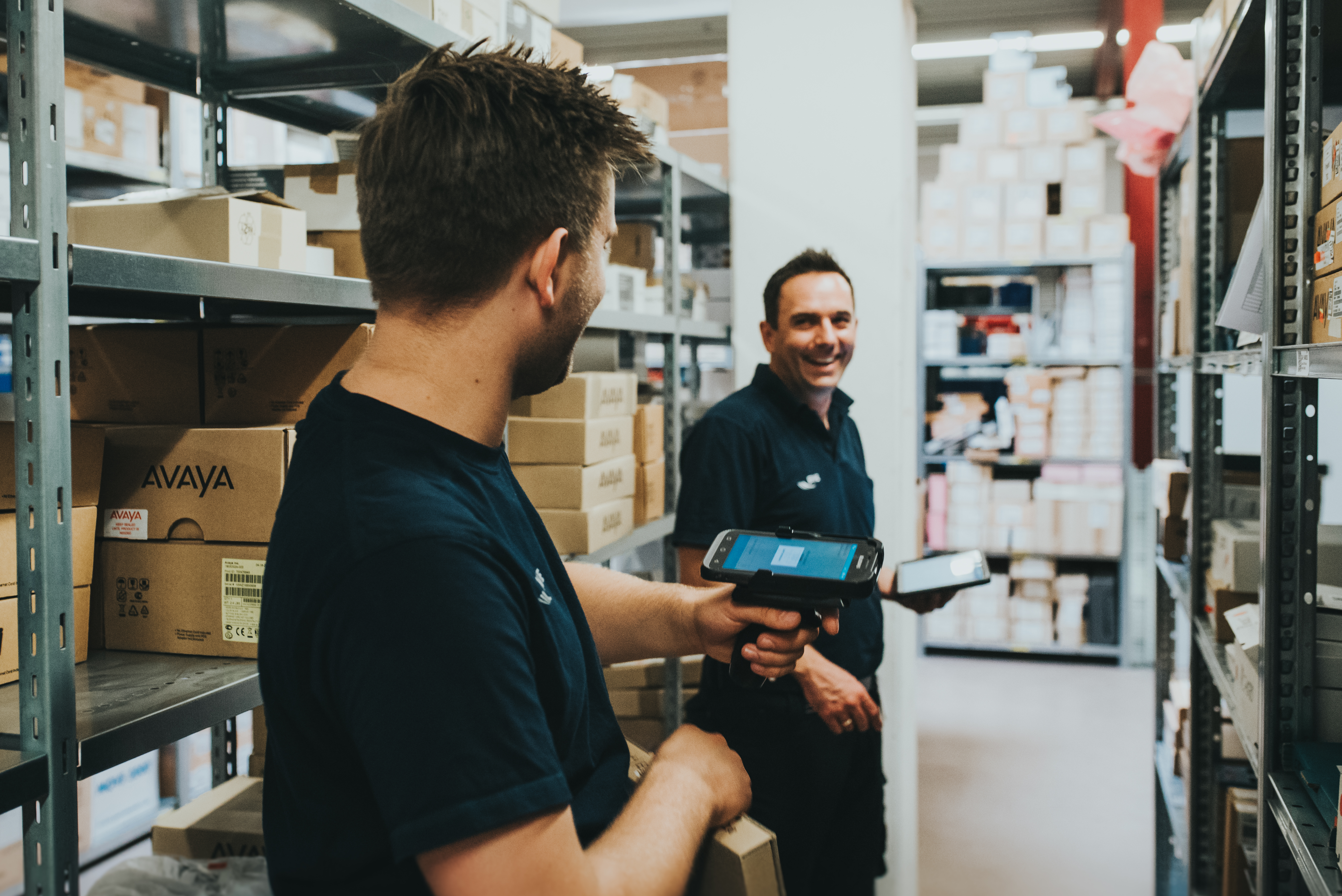
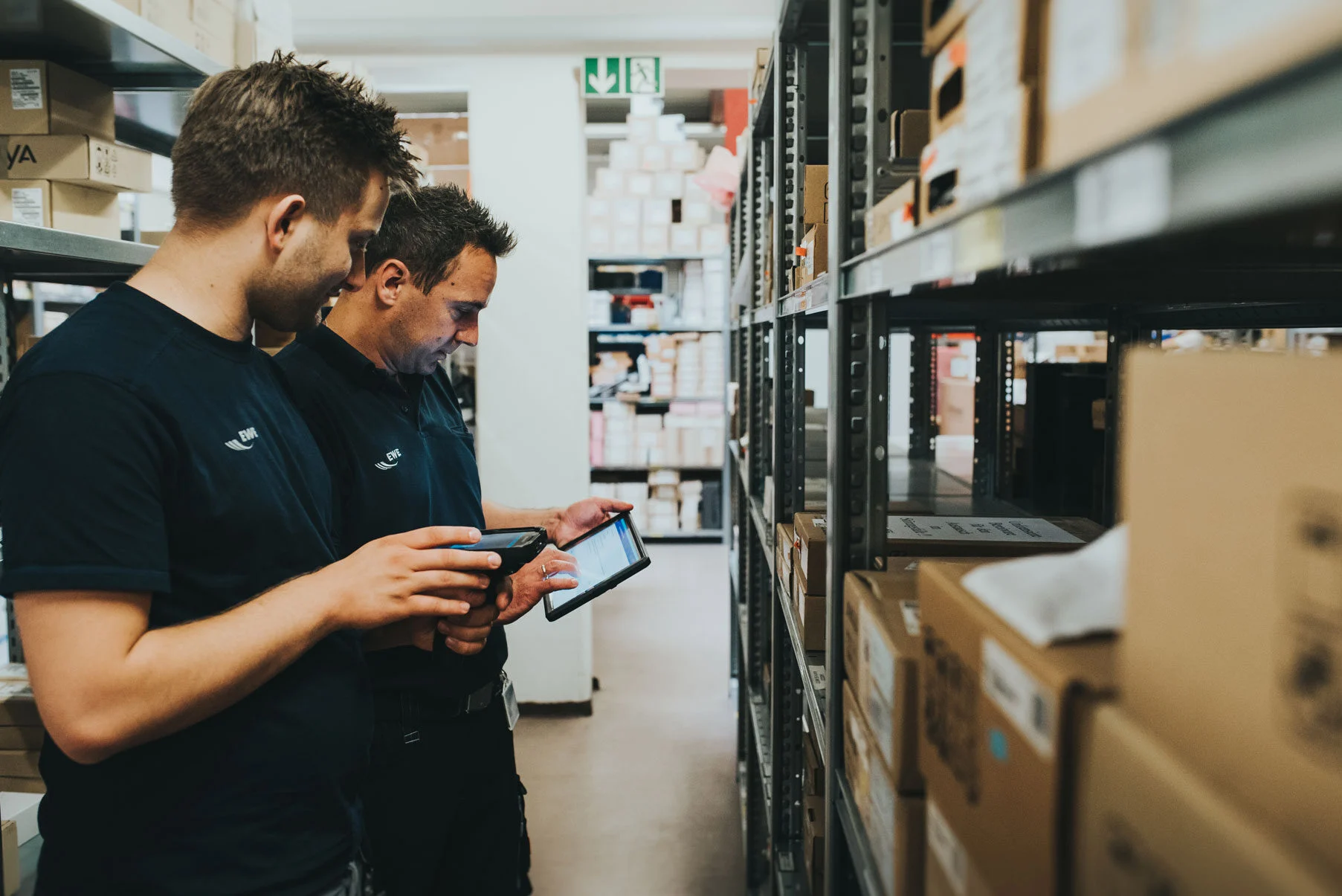
.webp)